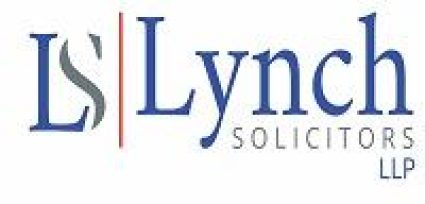
Tipp FM Legal Slot – 27th January 2015 – New Year’s Resolutions – Deal with Your Debt

On Tipp FM, John M. Lynch spoke to Seamus Martin on ‘Tipp Today’ about dealing with your debt in the new year.
Listen to John’s discussion:
[soundcloud id=’189618417′]
New Year’s Resolution: Dealing with Debt.
Debt Settlement Arrangements have been gathering momentum since the latter part of last year. We expect interest to continue to grow and more people will become involved as their knowledge and understanding increases. This increased interest in insolvency and bankruptcy options may be attributed, among other things, to the work of the Insolvency Service of Ireland (ISI) who have become more proactive about debt solutions by reducing costs and running a national awareness campaign. We now have tested debt solution mechanisms, an abundance of knowledge and professionals to guide us on finding the right solution for them. If you are carrying debt, make it your new year’s resolution to find a solution.
If people are burdened by debt what should they be doing?
- NY Resolution 1: Ignoring the problem won’t make it go away!
We have found that for far too long many people have been burying their heads in the sand when it comes to their debt problems. As with all life’s problems ignoring debt will only make the problem worse and the Insolvency code is a mechanism by which people can come to realistic arrangements to tackle insolvency.
The purpose of Personal Insolvency arrangements and the purpose of bankruptcy are not to punish people. The objective was from a political policy perspective was that the country – and its people – needed to get back up on its feet.
What steps should people take in order to address their debt problems?
- NY Resolution 2: Explore Your Options – They Do Exist!
The Insolvency Act was signed into law on St. Stephen’s Day 2012 and since then various officials have been appointed and offices opened, legislation was introduced, judges were appointed in order to deal with it, and statutory changes were introduced.
The first port of call for those who are insolvent – cannot meet their debts as they fall due – is to contact a Personal Insolvency Practitioner who will assess their situation and advise on which arrangement, if any, would be suitable. The PIP acts as a go- between for the debtor, the creditors, the Insolvency Service and the Courts.
There are four options under the new regime:
- Debt Relief Notice (DRN)
- Debt Settlement Arrangement (DSA)
- Personal Insolvency Arrangement (PIA)
- Bankruptcy
One of the first things a PIP will do is get a Protective Certificate for those who are struggling financially. This would stop any creditors pursuing them for a limited amount of time to allow time for proposals and negotiations.
Personal Insolvency Practitioners will:
- Help those who are looking for relief under the Act in preparing a detailed financial statement;
- Use this information to advise on what debts can be included and put together proposals based on the individual circumstances ;
- Submit proposals to their creditors once the various options and consequences are discussed ;
- Negotiate with the creditors to find a solution which both parties can agree on;
- Organise a meeting of creditors to vote on the proposals;
- Organise the approval of any agreed arrangements with the courts and the registration with the Insolvency Service of Ireland.
A detailed plan will be given to those availing of relief under the Act setting out their obligations and specifying the time frame within which these obligations are to be met. The practitioner will also be responsible for monitoring the payment arrangements for their duration.
What is the Prescribed Financial Statement (PFS) and who completes it?
For those wishing to avail of the new provisions one of the preliminary steps in doing so will be the completion of a Prescribed Financial Statement.
If you are entering into a Debt Settlement Arrangement or a Personal Insolvency Arrangement the PFS will be completed with the help of your Personal Insolvency Practitioner and will form the cornerstone of any application made.
The purpose of the PFS is to give an accurate written account of all assets, debts, income and expenditure so that a true reflection of the financial position of the person seeking relief is outlined. This will enable the PIP to recommend different options for dealing with outstanding debts and to recommend which arrangement, if any, would be suitable.
The PFS would form the basis of calculating what repayments will be made to creditors and what portion of monies can be kept to maintain a reasonable standard of living.
The statement will contain a Statutory Declaration which must be signed by the applicant and witnessed by a Notary public, Commissioner for Oaths, Peace Commissioner or a practicing Solicitor. It will be an offence to sign this declaration without full disclosure or if any of the details in the Prescribed Financial Statement are incorrect or misleading.
A considerable amount of work can be involved in preparing the PFS and vouchers or receipts for all of the details provided will be required.
When it comes to income arrangements is the reasonable standard of living the same across the board?
- NY Resolution 3: Know Your Limit!
Initially there was much debate about the minimum standard of living that people entering into insolvency arrangements are entitled to. I have found that many clients who I have been dealing with were living below the reasonable standard of living.
The Personal Insolvency code reduced the bankruptcy period to three years, but it also introduced a cross the board benchmark below which you should not be asked to live.
The reasonable standard of living will give you a level below which you can’t go, but neither the Assignee in Bankruptcy nor the Personal Insolvency Practitioner will marshal that; they won’t be arriving at people’s houses checking shopping lists!
What about the family home?
People often think that once they are in debt their family home is threatened. Our advice is to explore the options carefully without instantly feeling negative about it. The family home is protected to a certain extent under a personal insolvency arrangement. People have to live and part of that involves residing comfortably with their family. If you can come to a reasonable arrangement with your Assignee to pay your mortgage/rent then your chances of retaining the house are probably better than you first thought.
What about citizens abroad who are carrying Irish debt?
Irish citizens with debt in Ireland are still entitled to avail of these debt solutions as long as they are domiciled here.
How long does it take to find a suitable Debt Settlement Arrangement?
Once a person has filed their protective certificate, which protects the debtor from the initiation or continuation of certain enforcement proceedings or other actions, they have a 90 day period to negotiate a debt solution with their creditors and to put it in place.
Bankruptcy – Recent Developments
Removing the barrier to clearing your debt – New changes to Bankruptcy Costs.
Recent changes in the law have reduced the cost of applying for bankruptcy. Costs payable to the courts when applying for bankruptcy have now been reduced significantly from €1,400 in 2013 to just €270 now.
This development is a result of various initiatives announced by the Insolvency Service of Ireland (ISI) in October, including the waiving of all application fees for alternative solutions to bankruptcy and the launch of ‘Back on Track’ information campaign.
Previous costs of publicising of a bankruptcy notice in a newspaper can now be done on the web at no cost and court fees for lodging a petition have been eliminated.
This means that it is now less costly than ever before to avail of the opportunity to be debt free after three years.
How many people are actually going Bankrupt or through Insolvency?
The release of statistics from the ISI has also shown that the number of people availing of debt solutions increased to a large extent at the end of 2014 and is expected to grow with the initiatives set to continue in 2015.
In total, around 1,000 cases were reported, almost half of which were cases of bankruptcy:
- Bankruptcy cases 448.
- Alternatives to bankruptcy 547
Lorcan O’ Connor, head of the ISI has said that the office is now dealing with debt of almost €1.5 billion which is “is increasing every month and the trend is continuing to move in the right direction”.
It is clearly the case that people are now finding sustainable solutions to relieve themselves from the debt that has been weighing them down over the last number of years.
We have also seen some high profile cases such as Sean Quinn entering into Bankruptcy.
Irish businessman Sean Quinn is one of the main figures in recent media on bankruptcy. Mr Quinn has benefited from the new insolvency laws that have cut the period of bankruptcy from twelve years to three. In 2012, Quinn was declared bankrupt with a debt of around €2 billion, after losing control of his firms the previous year.
Due to be discharged from bankruptcy this week, a hearing of the high court was held on the 12th of January to decide on his terms. Ms Justice Costello made a payment order on consent for €10,000 to be paid by Quinn per year beginning this Friday. This means that Quinn will pay back just €20,000 in total as he emerges from bankruptcy.
What about the costs of Insolvency Arrangements?
The ISI campaign has also seen the cost to the ISI of applying for a Personal Insolvency Arrangement removed up until the end of 2015.
This means that cost is no longer a barrier to having these arrangements put in place and is a real step in helping those who are most vulnerable to come out the other side of their financial troubles.

